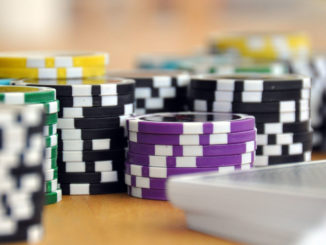Adding a new table game to your pit
During my days as an operator, conferences with expos gave me the chance to network with others in similar job roles and to also see what else was out there beyond the walls of my own casino. To be honest, some of the tribal facilities I was employed at were located in the boondocks, quite a distance from a large population base and other operators.
I basked in the excitement of a big game installation or pit reconfiguration. I’d jump in headfirst, only to look up weeks later and realize that while I had a great game mix, I may no longer be offering the latest and greatest games on the market to my loyal player base. Offering a balance of traditional table games with a mix of specialty games is the key to happy players, engaged dealers, and increased revenues within the department.
This two-part article is going to offer a little advice and some suggestions regarding the adoption of a new table game for your pit.
Updating content in your table game operations is just as important as it is in slots. Offering new and exciting games of chance not only provides your existing players with a chance to learn a new game, but it can also be instrumental in attracting new players. You are exposed to new games all the time, in gaming publications, at conferences, and through vendors visiting your property.
How does one go about evaluating a new game for your pit, you ask? I am going to highlight a few questions that you can start by asking yourself:
- How does this game meet the needs of my players and department?
- Does my nearest competitor offer this game or one similar to it?
- Will it bring in new business and increase revenue?
While we all understand that creating new players is key for long-term growth, you need to see results and satisfy budgeted numbers today, right? If I can offer an experience that is similar to my competitors, but with more attractive payouts and superior customer service, I will likely have the opportunity to steal players from my neighboring competitors. Similarly, if I can offer a brand new experience with favorable payouts and that same great customer service, I can also capture a share of their play. Either alternative allows me to fill my new tables from the start, with customers who are just being introduced or reintroduced to my property.
Is the game you are reviewing fun for the players and easy to deal?
Many of the new games on the market are increasingly complex, as their designers try to be everything for everybody. They are adding side bets, multi-game layouts and game in game features. All that is enough to give the dealers a headache, while simultaneously confusing the players. Every time we add a new game to the floor, we add to the responsibilities of our dealers and supervisors. Before considering anything else about the game, I want to know:
- How smoothly does the game play?
- How many steps will my dealers have to make in order to complete a hand?
Keep in mind the old adage, “The more moving parts, the higher the chance of failure.”
To test the game, I would gather employees from different departments to play for several hands. When they became restless, bored or ran out of time on their break, I would pepper them with questions to collect information about what they liked and did not like. Watching the employees learn the game and interact with the dealer allowed me to see any inefficiencies of the game, and it also gave me the opportunity to see how easy or difficult the game would be for people to learn to play.
Now that we have determined the game is fun to play and easy to deal, we can move on to the next steps:
- How much does the game cost?
- Does the game require supporting equipment?
- Does the theoretical hold of the game meet your revenue requirements?
How much is it going to cost to offer this game on my floor? When you figure the costs related to the addition of the game, the lease is only a part of the equation. The game vendor will provide you with the price of the lease and let you know what is included in that price. If signage is required for the game, it should be included in the fee. Does the game require a shuffler? If so, do you have a shuffler available for the game, or do you need to acquire one? What is the cost of the time and resources necessary to train your staff on the game? How about the costs associated with marketing the game to the public? Be sure to also factor in the cost of the layouts, discard racks, markers, cards or dice. These amounts, along with any fixed costs, must be combined to determine the true cost of operation. I know, I threw a lot at you in this last paragraph, but there really is a lot to evaluate when measuring true cost.
Next you need to have a clear understanding of game rules and how they work in the favor of the house. The house advantage of each pay table is based both on the rules of the game and the payouts offered. Be sure to ask the vendor what they predict for the average number of hands per hour and the average length of play per session. These factors, when combined with the average bet, will allow you to estimate the theoretical hold percentage of the game under the stated conditions. Ensure the hold percentage you select matches the needs of the property and the customer base. If the game over-holds, your table patrons will see little value in playing it, and if it under-holds, your department will be leaving money on the table. New game vendors should provide several variations to their pay tables, and it’s relatively simple to pick the pay table that best matches your needs.
Look for Part II, wherein we’ll address the regulatory requirements that must be addressed prior to a new game installation.



